Hour of Code 2019 Event Report
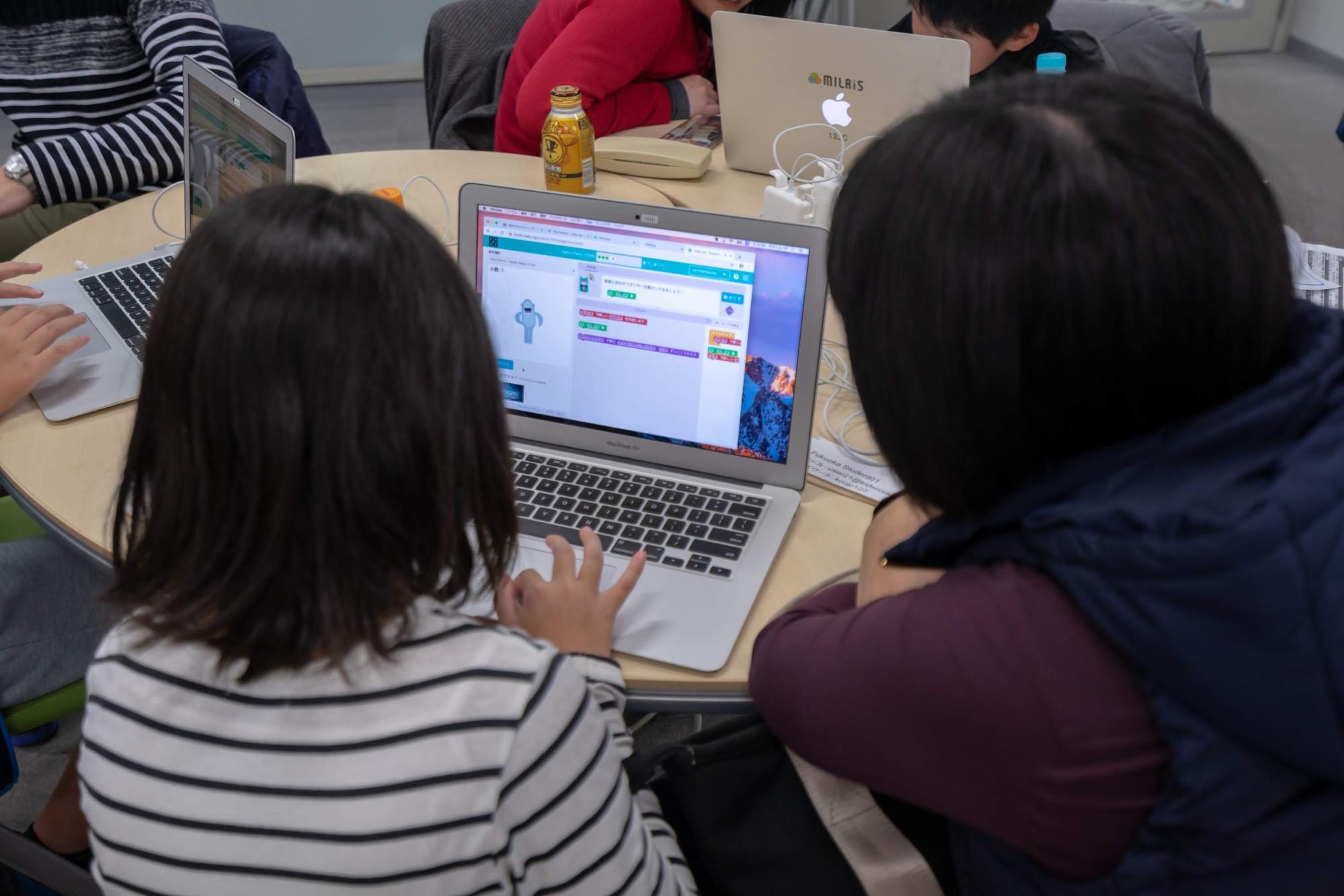
Introduction
CS in English has been teaching computer science to students in Seattle, as well as to students in Japan’s Kumamoto and Fukuoka prefectures through a teleconference system called Zoom. On Dec 7th, 2019 we held a class called “Hour of Code - Let’s dance” I hope everyone who was able to attend enjoyed it. This document is the report for those who missed the class. This was the 6th installment of our SIJP classes, and was the last one for 2019. This venue created a fun learning environment, all while engaging students effectively in order for them to learn coding skills. For this, we would like to say thank you on behalf of all of our staff of CS in English for all of the support throughout the classes.
The first week of December is called “Computer Education Week” due to Grace Hopper’s birthday being on December 6th. During this week, students all over the world study computer science, and at the same time, the event called “Hour of Code” is held to raise awareness for coding by providing a one-hour introduction to computer science for all ages of people.
Main Theme of the Class
The hour of code this year was a phenomenal time to learn coding. Last year, Kenji witnessed this moment at Open Window School where the code.org CEO, Hadi Partovi, introduced beginner students to advanced coding techniques. He even danced with a Shark costume on during the coding assembly!
I surprised my daughter at her school #HourOfCode assembly. 😂😂#leftshark #danceparty #firework pic.twitter.com/0E2QJQY725
— Hadi Partovi (@hadip) December 13, 2018
Students enjoyed the assembly thoroughly. They also made several impressive dance moves on the code.org platform.
Kenji wanted to bring this atmosphere to Kumamoto and Fukuoka with the help of Internet.
Kurume University in Fukuoka joined the class for the first time. Welcome!
Assignments
We prepared and assigned two assignments ahead of class as practice for the students.
Code.org Activity
We asked students to join our code.org class and work on the first two assignments (1 and 2) as a warm up. Some students worked on more assignments in the course, we appreciate it greatly!
Wooclap questions
Several software engineers in Seattle joined the class as teaching assistants. So, we asked students to come up with questions
These are the questions from students in Japan and Seattle for software engineers in US by @wooclap
— Seattle IT Jp Prof (@SeattleITJpProf) December 10, 2019
#CSinEnglish pic.twitter.com/cq6C7uVqfy
In the class, software engineer answered these questions.
Teacher Introduction
Unplugged Dance Activity
Introduction
First, we introduced “Events” and “Event-Driven Programs”. Please watch the following video
Here are some examples of Event-Driven Programs:
- https://codepen.io/jh3y/pen/aPzVme
- https://codepen.io/alexzaworski/pen/mEkvAG
- https://codepen.io/epilande/pen/eZJGpP
Now we are ready to dance! Let’s have some fun shall we?
Dancing
We invited Yosuke from Kumamoto. He is a professional dancer. He started teaching the dance moves (the instructions can be found here).
First, he introduced six dances: Dabbing, High Claps, The Star, Body Rolls, the “This or That”, and the Floss. You can also learn these dances from this slideshow.
It looked like the most difficult dance was the Floss. Here is a video about the Floss dance for beginners:
A lot of kids in U.S. seemed to know about the Floss dance prior to this event, which was a surprise to us and our Japanese audience.
Each dance had its own color associated to it, which is important in the next step, the Control Panel.
Measures
In dance we use something called Counts. Four Counts is equivalent to a Measure, Two Measures is equivalent to eight Counts, and Four Measures is equivalent to 16 Counts. You can write code based on this. During the dance activity, you can change the dance at every 2nd Measure or 4th Measure.
We had blast at the dance lesson thanks to Yosuke. Not only the kids, but also parents participated in it, we hope they had fun!
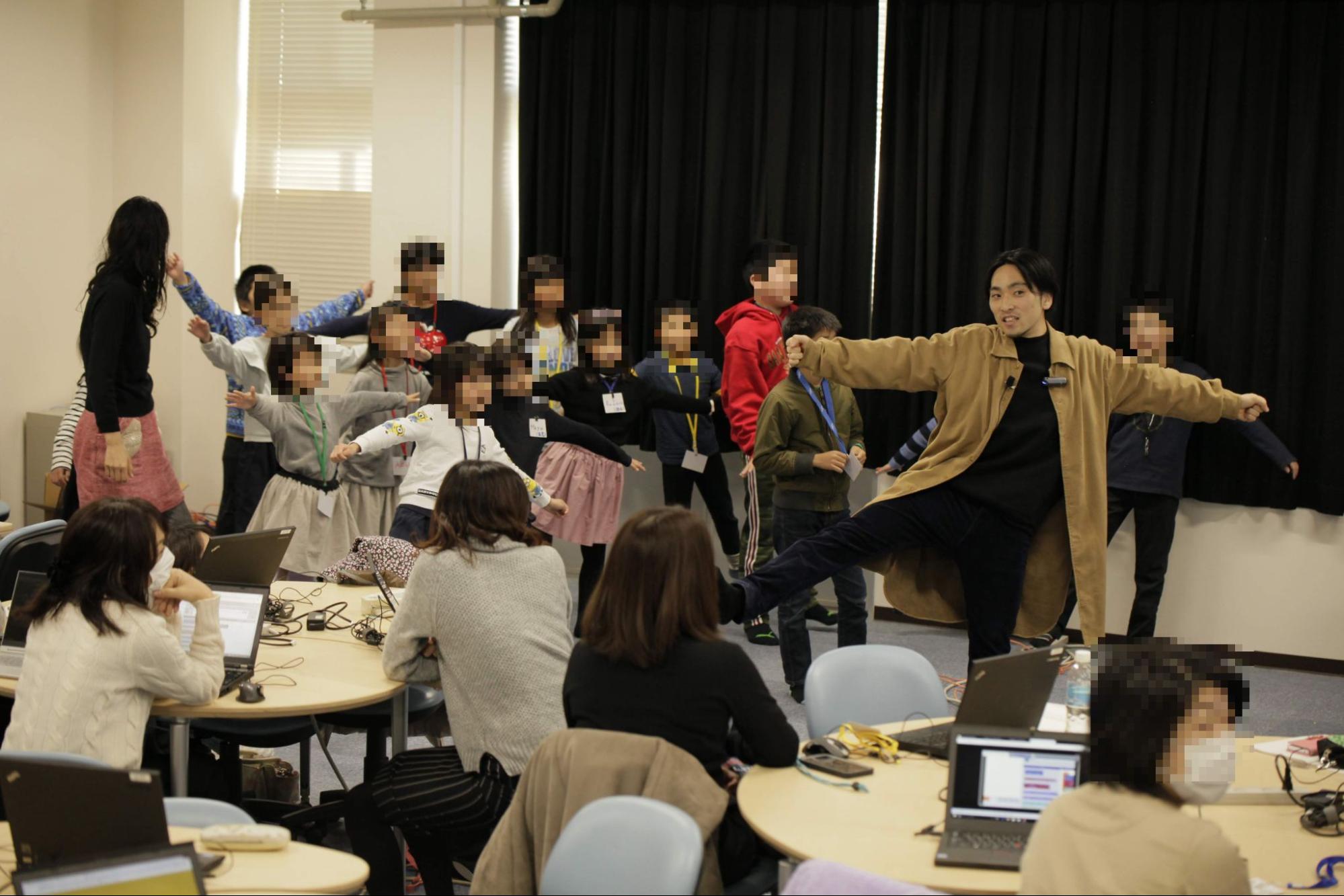 From Kumamoto
From Kumamoto
After the dancing we had small break. In Seattle, we had very tasty sandwiches from TRES (they gave us some extra for the hard-working kids). We appreciated this act of kindness, thank you very much to the people from TRES.
Code.org Activity
After we learned about dance moves, we started a coding program in which the students had to get characters to dance; this was done through code.org. We were so amazed that the kids were able to complete the task without much of our help (Allowing us to have a long break after that dancing workout). Lesson 13 is a section where students can share their dance moves with others using the “Share” button. We asked kids to share the link to Seesaw so that others can look at them. Here is the activity for that.
Here are submissions from students in the activity dashboard.
We worked on #HourOfCode Dance using @Seesaw and @codeorg. Please look at their work of students in Seattle and Japan! #CSInEnglish pic.twitter.com/Gdr0uhI9sq
— Seattle IT Jp Prof (@SeattleITJpProf) December 11, 2019
Like Time
Before we moved on to each student’s presentations, we took 5 minutes for kids to look at others’ work. The work shows up in the journal or the activity dashboard. They can like it or comment on them.
Seesaw allows for liking and commenting on others’ work in the class. We saw a lot of interaction among kids. This is an advantage of using Seesaw.
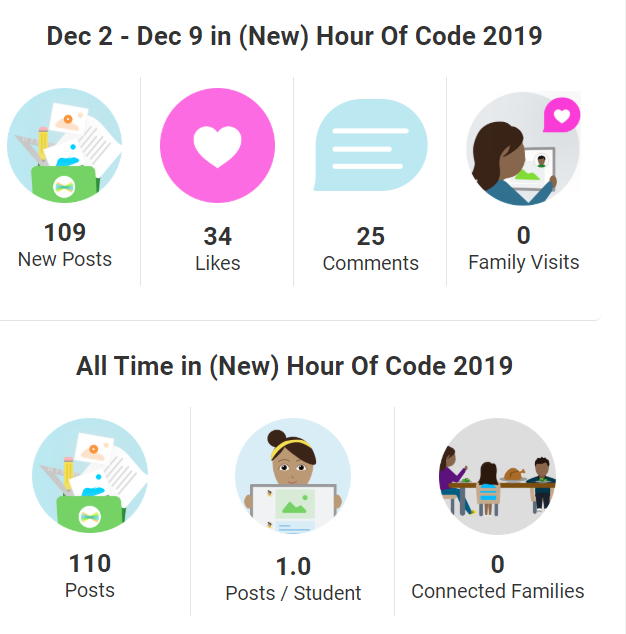
Presentation
From the Seattle classroom, we presented several works in the classroom and asked about their work. We were surprised that kids in Japan used English for their interviews and presentations. Also, it was a truly magical moment that their work was able to be presented to all 3 three locations. Here is some of the work by students.
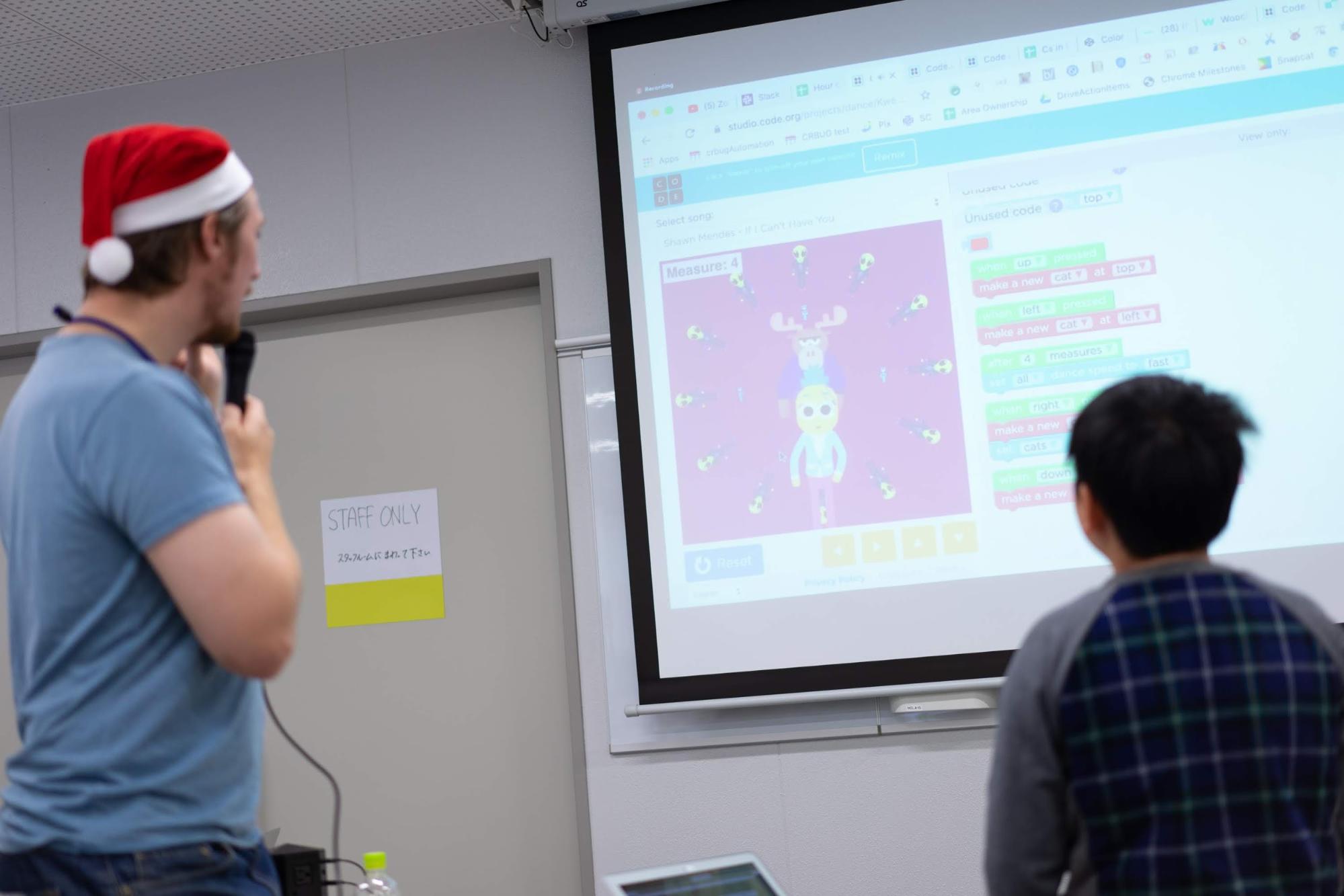
Fukuoka
Kahoot time
As usual, we did a Kahoot quiz show about what we learned in class that day
Feedback
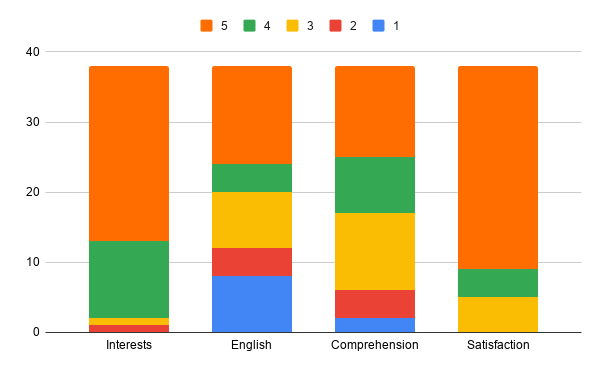
Comments
Good things about class
- We got to do an hour of code, and we got to share our work with the class, and see other people’s work, too.
- Made abstract concept fun to understand and practice. Students from multiple places can observe each other’s projects simultaneously.
- The best part was that kids could make their own creation and then show it off.
- The class was fun for my kids, they always ask when the next class will be after the class has ended. Well done again to the team!
- I enjoyed songs and coding with my friends. I learned a lot with Kahoot, although it was difficult.
- I learned the fun of the program.
- I enjoyed the quiz.
- I enjoyed dancing.
- It was fun to have game and dance time. Also programming time as well.
- It seems that he was interested in it
- I’m glad helpers were kind and polite.
- I understood programming well.
- We learned many code things with questions.
- I enjoyed the dance.
- I’m so glad I could do something I’ve never done before. The quiz was interesting.
- It was good that you explained slowly.
- easy to understand
- I didn’t get a good score on the quiz, but it was fun.
- It’s my first time using a computer, so I’m glad it’s interesting.
- programming was fun
- It was good that I got points at kahoot.
- I was able to do programming
- It’s far, but I’m glad I could communicate.
- I’m glad I got the quiz right.
- I didn’t get bored with programming and dancing that was interesting and easy to participate in.
- I made a dance
- The dance and interaction with Japanese people were interesting.
- To be able to learn programming in English
Improvements needed
- My son wanted to make his own character.
- The content was easy for my 13 years old so he didn’t feel overly challenged. Adding additional levels of challenge or stretch goals for older students or students who have been attending the classes for a long time could help keep them engaged
- I want you to increase the number of drawing and graphs.
- The screen of Kahoot was hard to see.
- I want you to take action to be more careful when there is a problem. such as changing the background color
- I did not have enough time to do programming
- It was so much fun that I wanted the experience time to be longer.
- It was my first time to participate, so I thought I should have prepared more.
- I wanted to make the screen easier to see.
- In English. So I want you to go ahead in English. Most of the venues in Japan are in Japanese, so it’s a shame that I don’t have many opportunities to use English.
- I was sad that my work wasn’t presented
- I want to use the computer more.
- talk about something more difficult.
Comments
- Thank you for your support. It made kids to have more interest in coding. It was a precious experience.
- Thank you for the snack. My son liked ebikatsu
- I had a great time. I want to come again next month.
- I’m glad I joined.
- I’m glad that I got the first prize.
- I want to do dance programming again.
- It was soooooo much fun.
- I had a good time. If it is held again, I would like to participate.
- It was fun to move my body and head.
- it was a good time to know about code for kids. I love it!
- I had a good time programming for the first time.。
- It was fun.
- I enjoyed quizzes and games.
- English was a little difficult, but the game was fun. I want to participate again next year.
- It was my first time participating and I wanted to do it again.
- It was good that there was support in Japanese.
- Sandwich TRES is delicious.
- I’m interested in robotics.
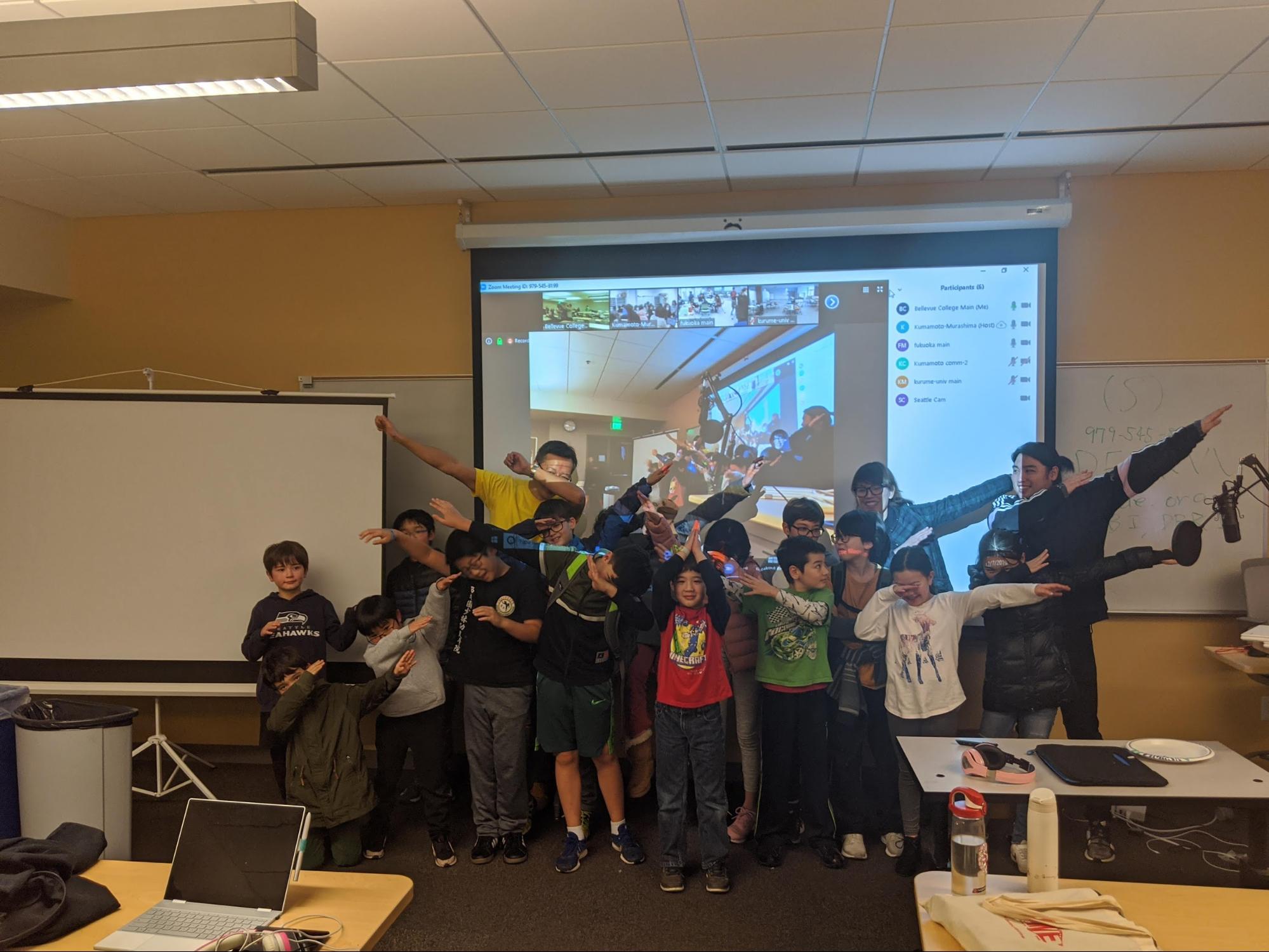
Seattle